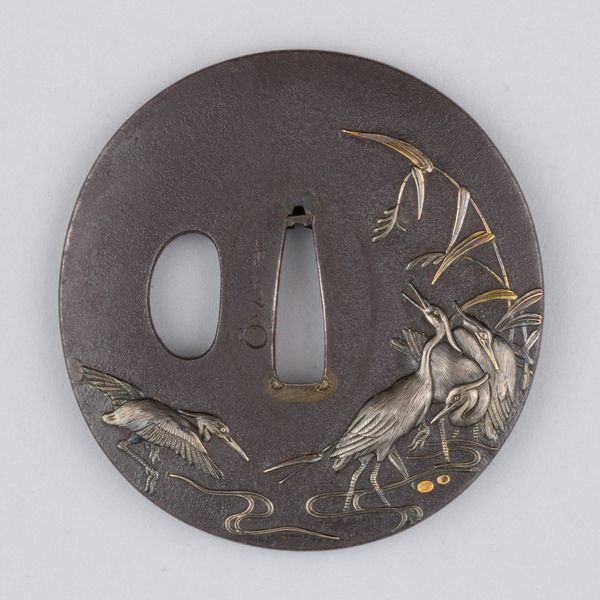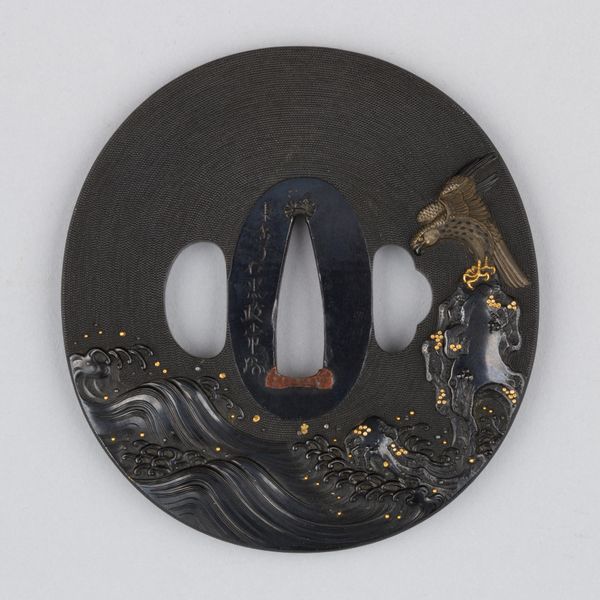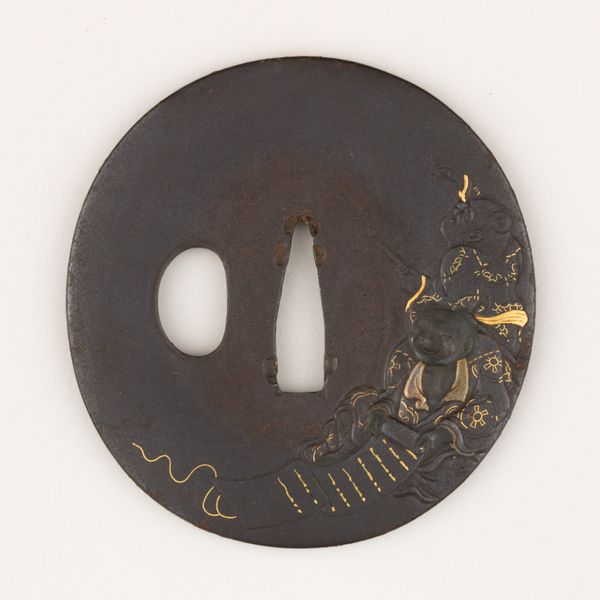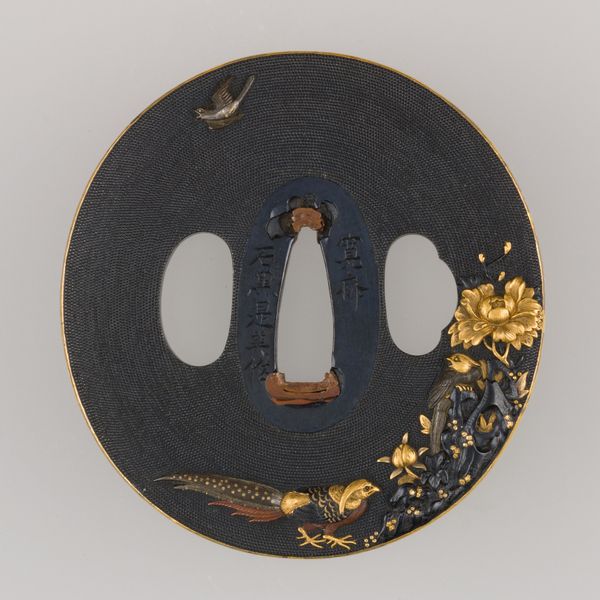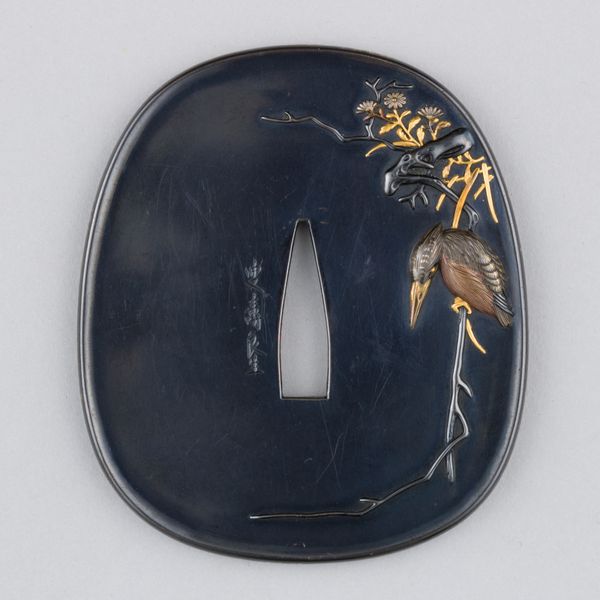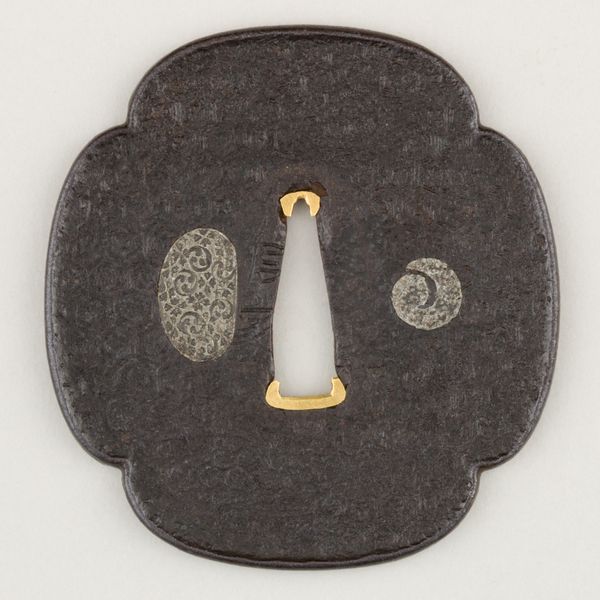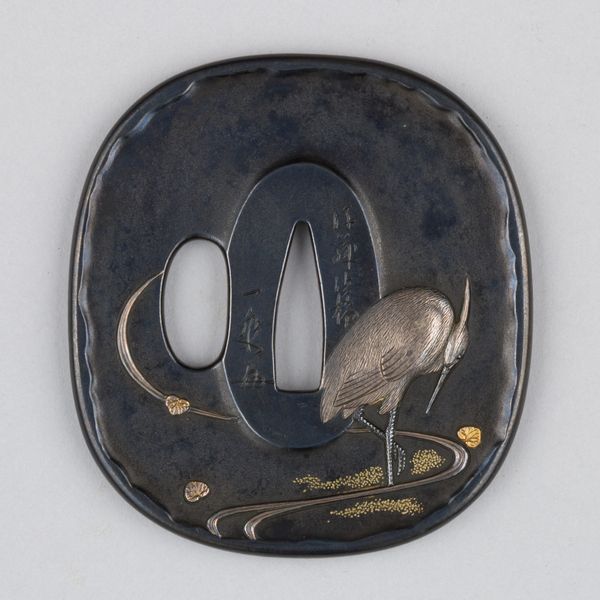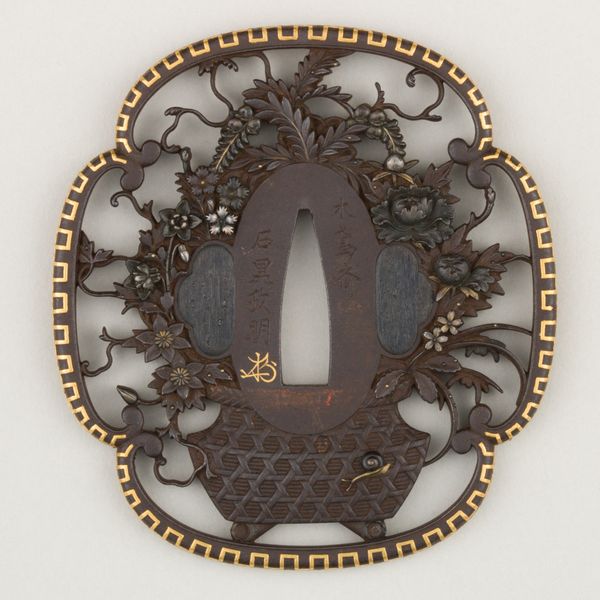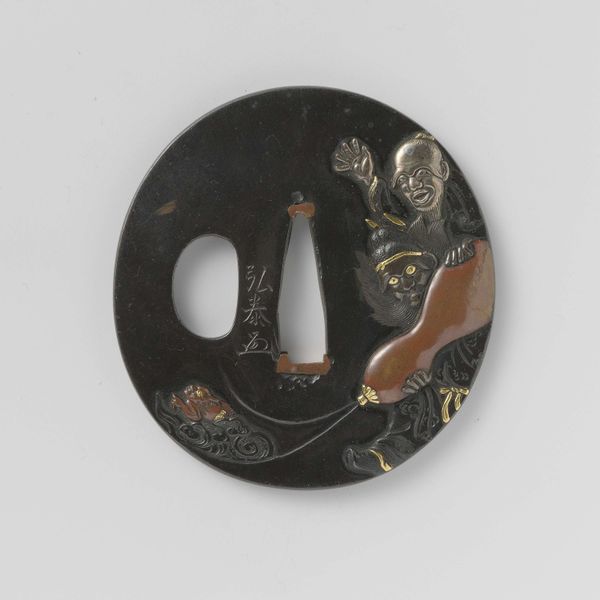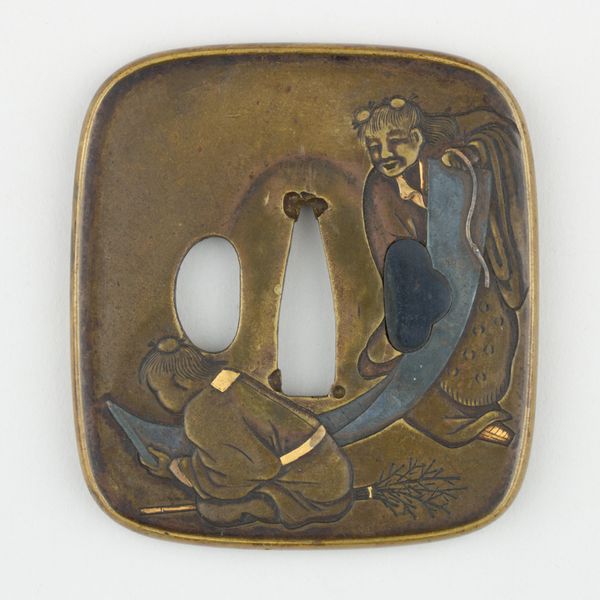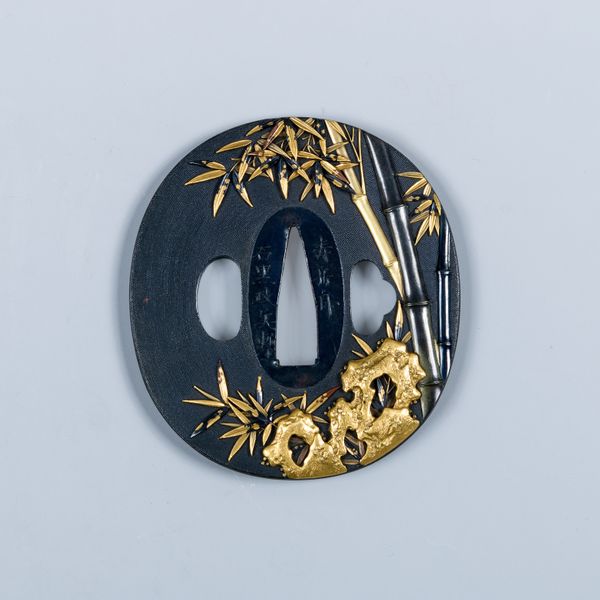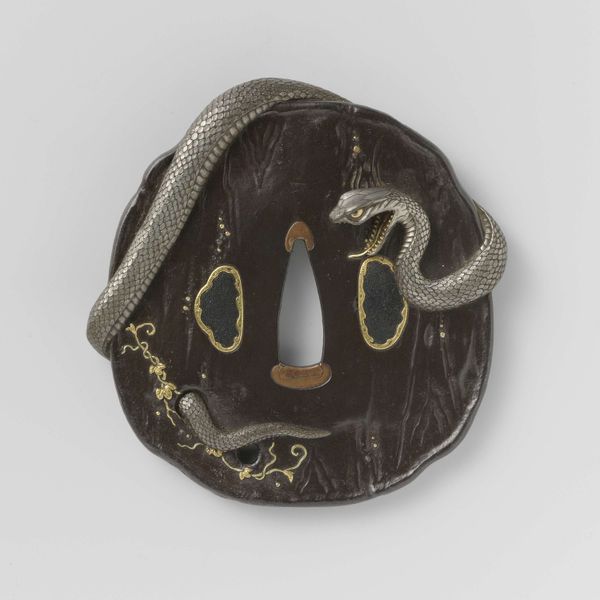
Sword Guard (<i>Tsuba</i>) Depicting Heron on Boat (一路平安図鐔) 1720 - 1770
0:00
0:00
metal, sculpture
#
metal
#
asian-art
#
bird
#
sculpture
#
armor
#
sword
Dimensions: H. 2 7/8 in. (7.3 cm); W. 2 11/16 in. (6.8 cm); thickness 1/4 in. (0.6 cm); Wt. 4.9 oz. (138.9 g)
Copyright: Public Domain
Curator: This striking sword guard, or tsuba, made of metal and dating back to the mid-18th century, comes to us from Japan and is the work of an artist known as Shozui. The piece currently resides here at the Metropolitan Museum of Art. It depicts a heron perched on a boat beneath what appears to be an outcropping of golden mist. Editor: I find it immediately calming, which feels so paradoxical for something associated with a sword. The muted browns of the metal combined with that glittering gold give it such a contemplative quality. Curator: Tsuba, like this one, weren't just functional; they were miniature art forms that offered samurai a chance to express their personality, beliefs, or even subtle messages. The heron, for example, in Japanese art symbolizes long life and wisdom. The boat further emphasizes this journey, creating a quiet poem about navigating life’s waters. Editor: Yes, the 'poem' you mention speaks to me. To place a heron on a boat implies passage, a crossing-over. Water signifies the unconscious; the boat is consciousness—that bird seems on the precipice of knowing, wouldn’t you agree? Also, what’s that line of linked stylized foliage behind it, near the sword’s edge? Curator: Well, many art historians interpret it as bamboo, a frequent artistic subject representing resilience, so, given that it adorns an instrument of violence—if such an argument could exist!— it is fitting, yes? Editor: Violence transfigured, perhaps? I imagine the samurai meditating on this very image between battles, drawing strength and balance, recognizing the fleeting nature of both conflict and peace... It's fascinating how this object manages to evoke such depth and contemplation through such refined symbolism. Curator: It really underscores that Japanese aesthetic principle, doesn’t it—that less is, indeed, much, much more? Editor: Definitely a good thing to remind ourselves on a daily basis. And now, if you’ll excuse me, I must leave the precipice of knowledge to contemplate my bamboo...
Comments
No comments
Be the first to comment and join the conversation on the ultimate creative platform.
